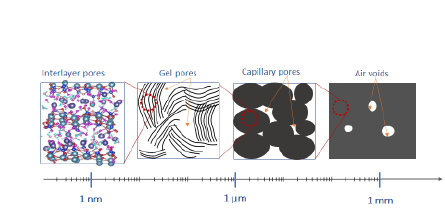- Imprimer
- Partager
- Partager sur Facebook
- Partager sur X
- Partager sur LinkedIn
Recrutement
Le 1 octobre 2023

Keywords :
Cement Based Materials — High-temperature response — Thermo-Hydro-Mechanical couplings — Molecular modelling/simulation — Upscaling approaches
Date
Contact
Dr.Majdouline Laanaiya / Pr. Stefano Dal Pont
majdouline.laanaiya@univ-grenoble-alpes.f
Télécharger
Required skills and duration
- Master’s degree in the field of civil engineering, materials science, physics or similar.
- Experience with (or motivation to learn) molecular dynamics and modern computa-
tional physics.
- Experience with (or motivation to learn) programming and high-performance comput-
ing.
- Advanced English for scientific communication.
3 years starting from October 2023
Application process and References
Please submit your application including CV, transcripts and motivation letter to Dr.
Majdouline Laanaiya - majdouline.laanaiya univ-grenoble-alpes.fr (majdouline[dot]laanaiya[at]univ-grenoble-alpes[dot]fr) or/and Pr. Stefano
univ-grenoble-alpes.fr (majdouline[dot]laanaiya[at]univ-grenoble-alpes[dot]fr) or/and Pr. Stefano
Dal Pont - stefano.dalpont 3sr-grenoble.fr (stefano[dot]dalpont[at]3sr-grenoble[dot]fr) before April 30th, 2023.
3sr-grenoble.fr (stefano[dot]dalpont[at]3sr-grenoble[dot]fr) before April 30th, 2023.
References :
[1] D Dauti et al. ‘Modeling concrete exposed to high temperature: Impact of dehyd-
ration and retention curves on moisture migration’. In: International Journal for
Numerical and Analytical Methods in Geomechanics 42.13 (2018), pp. 1516–1530.
[2] Hani Cheikh Sleiman. ‘Contribution of neutron/X-ray tomography for the drying
modeling of cohesive porous media’. PhD thesis. Université Grenoble Alpes, 2021.
[3] Mohammad Javad Abdolhosseini Qomi et al. ‘Advances in atomistic modeling and
understanding of drying shrinkage in cementitious materials’. In: Cement and Con-
crete Research 148 (2021), p. 106536.
[4] Majdouline Laanaiya and Ali Zaoui. ‘Piezoelectric response and failure behavior
of cement paste under external loading’. In: Cement and Concrete Research 139
(2021), p. 106257.
- Imprimer
- Partager
- Partager sur Facebook
- Partager sur X
- Partager sur LinkedIn